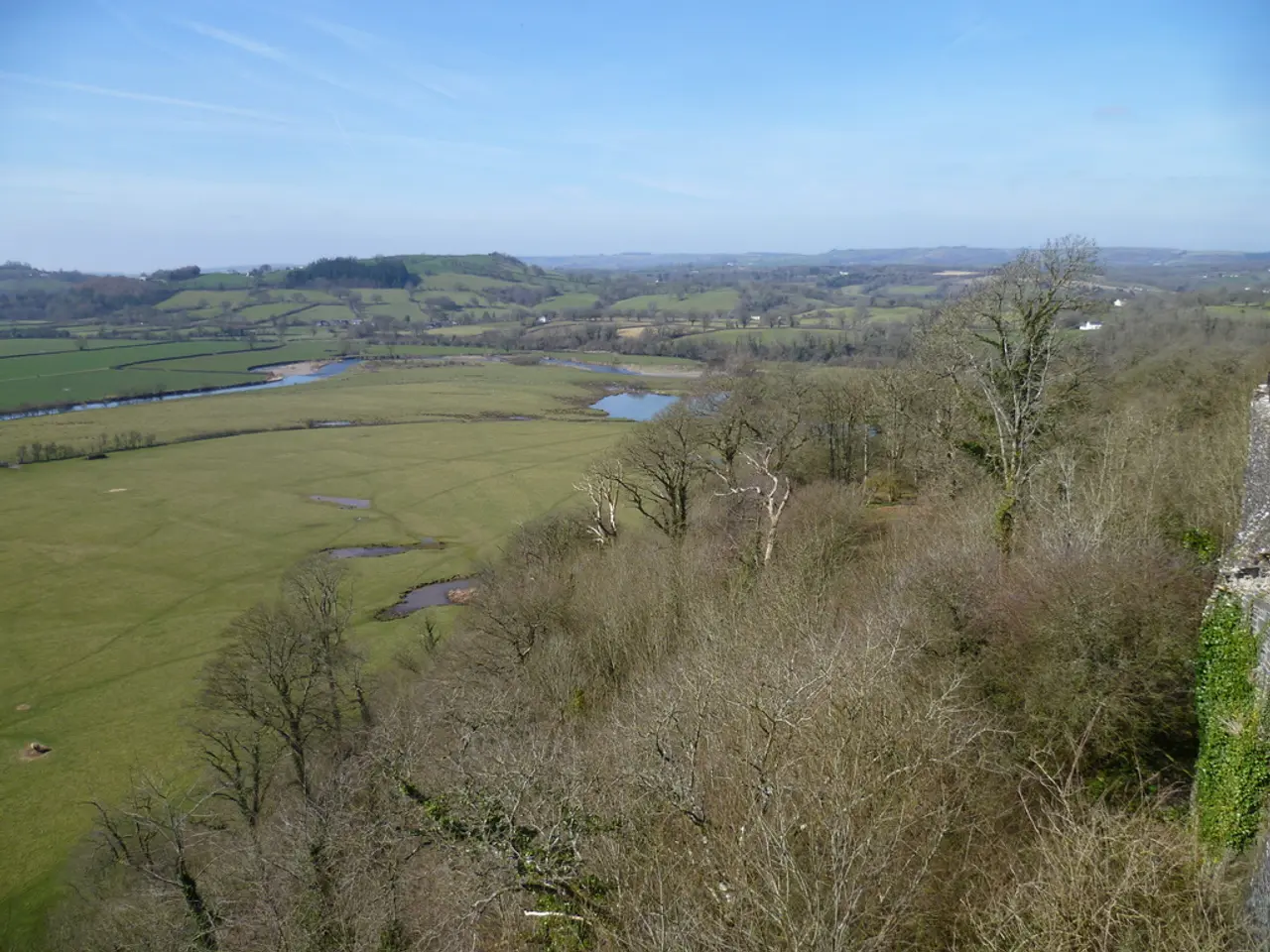Cultivating Sustainable Agriculture at High Elevations: Produce Farming in the Mountains
In the heart of the American Southwest, Indigenous farming practices and permaculture are being harnessed to create sustainable, resilient agricultural systems that withstand the challenges of climate change.
Building local food networks is crucial for communities, as it enhances food security and reduces dependence on food from outside their area. Indigenous groups in the American Southwest have long employed sustainable farming methods, such as the Three Sisters method of companion planting (corn, beans, and squash), sophisticated irrigation canal systems, and water conservation methods like hillside terraces and check dams.
However, colonialism and climate change have taken a toll on these lands, causing desertification and loss of native plants. Colonization disrupted Indigenous agricultural systems, while climate change is increasingly stressing water resources, crop viability, and soil health.
To counter these challenges, restoration efforts are underway through permaculture. Permaculture, with its focus on taking care of the land and saving water, echoes many Indigenous practices. Modern permaculture projects incorporate ancient Indigenous knowledge, adapting it for current climate challenges.
For instance, rainwater harvesting systems collect rain from rooftops and paved areas in mountain areas and store it for later use, helping save groundwater. Permaculture farmers also use natural barriers like hedgerows and stone walls to keep animals out without harming them. Vertical gardening is key to using small spaces well in mountain permaculture and boosts food production.
One significant example is the $2 million permaculture project planned with a local First Nations community in the Rocky Mountains. This project, along with online courses offering lessons on sustainable mountain permaculture, is helping farmers improve food security and build strong agricultural systems.
The U.S. Department of Agriculture's Indigenous Food Sovereignty Initiative also plays a role by promoting traditional foods and supporting tribal agriculture. The Fambidzanai Permaculture Centre in Zimbabwe offers formal training in agroecology to 15-30 people each month, while the UMass Permaculture Initiative, started in 2010, now has five gardens and has won a big award in 2012.
Soil erosion is a significant problem in mountains, and permaculture uses terracing to stop soil from washing away. Choosing hardy, adaptable crops like quinoa, amaranth, potatoes, and carrots ensures a good harvest, even in tough conditions.
In summary, Indigenous farming practices in the American Southwest centre on polyculture, water management, and soil conservation. Restoration through permaculture explicitly draws on and revitalizes Indigenous knowledge to create sustainable, resilient farming adapted to the changing environment. This approach, which works with nature, is a key solution for restoring mountain areas in the American Southwest.
- The resilient agricultural systems being developed in the American Southwest, through the fusion of Indigenous farming practices and permaculture, aim to address the challenges posed by climate change.
- By establishing local food networks, communities can strengthen their food security and decrease reliance on food sourced from outside their region.
- Ancient Indigenous farming techniques, such as the Three Sisters method of companion planting, have proven to be resourceful and sustainable, maintaining harmony with nature.
- Regrettably, colonialism and climate change have had detrimental effects on these terrains, leading to desertification, diminishing native plant species, and straining water resources.
- To combat these issues, permaculture projects are being implemented, focusing on caring for the land and conserving water, aspects that align closely with numerous Indigenous practices.
- Incorporating advanced water management techniques, like rainwater harvesting systems, is a critical aspect of modern permaculture, enabling the collection and storage of rainwater in mountain areas, thus helping preserve groundwater.
- Permaculture employs natural barriers, such as hedgerows and stone walls, to protect crops from animals without causing harm to them, ensuring a symbiotic coexistence.
- Vertical gardening is a crucial component of mountain permaculture, as it effectively utilizes limited spaces and boosts food production.
- Collaborative permaculture projects, like the $2 million initiative with a local First Nations community in the Rocky Mountains, play a pivotal role in bolstering food security and constructing robust agricultural systems.
- Online courses enlightening individuals on sustainable mountain permaculture help facilitate further knowledge dissemination, ultimately encouraging widespread implementation of these practices.
- The U.S. Department of Agriculture's Indigenous Food Sovereignty Initiative supports traditional foods and agricultural endeavors among Native American communities.
- Educational institutions, like the Fambidzanai Permaculture Centre in Zimbabwe and the UMass Permaculture Initiative, offer formal training in agroecology, enhancing the global understanding and adoption of permaculture methods for the betterment of sustainability, health-and-wellness, food-and-drink, environment-and-self-development, fitness-and-exercise, and home-and-garden.




